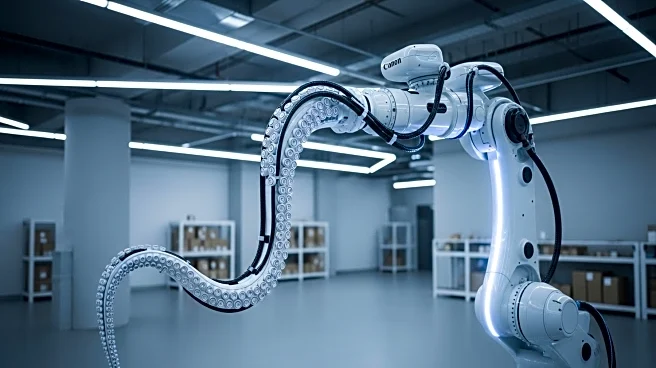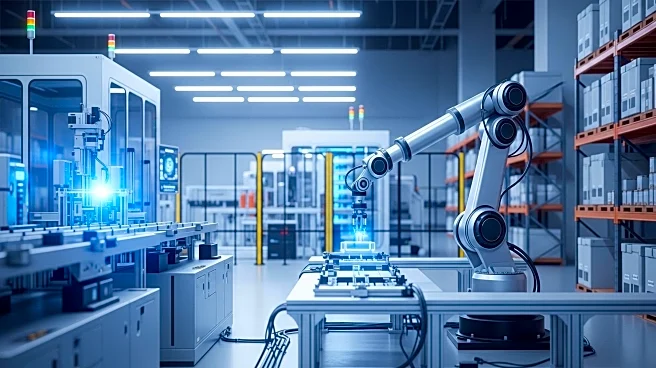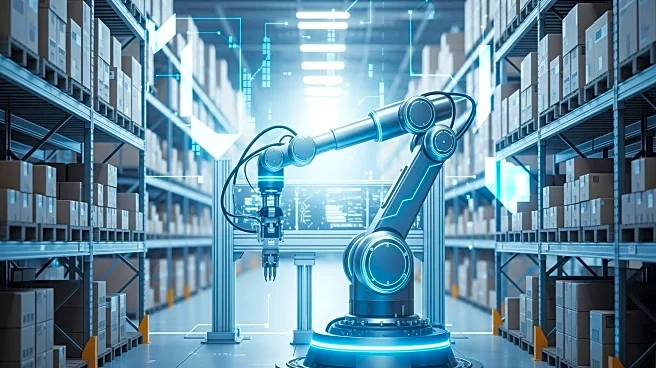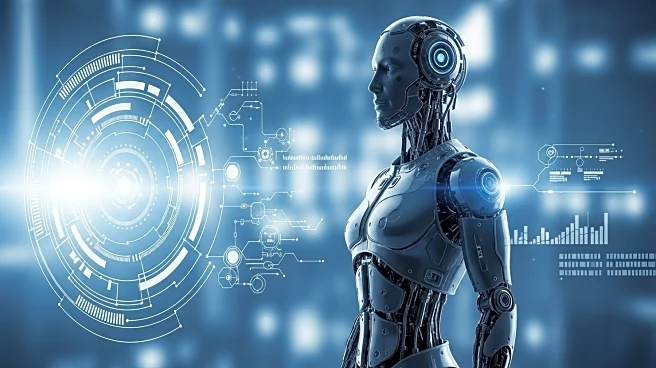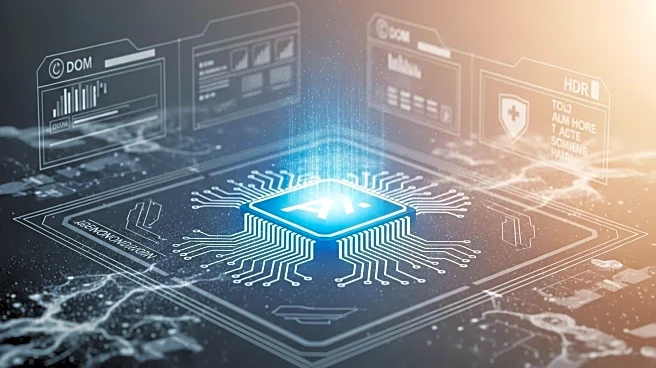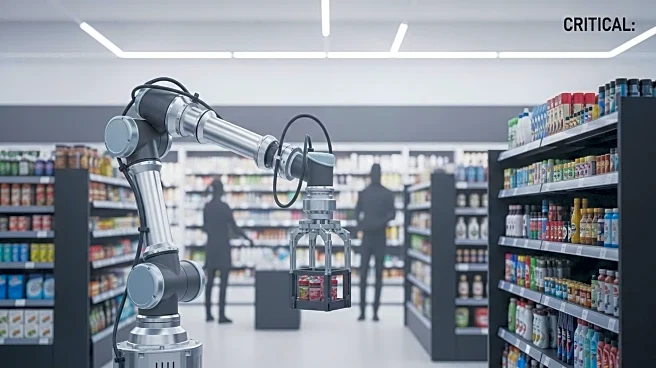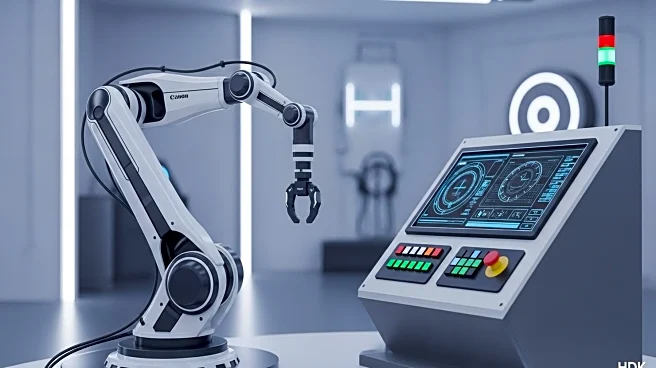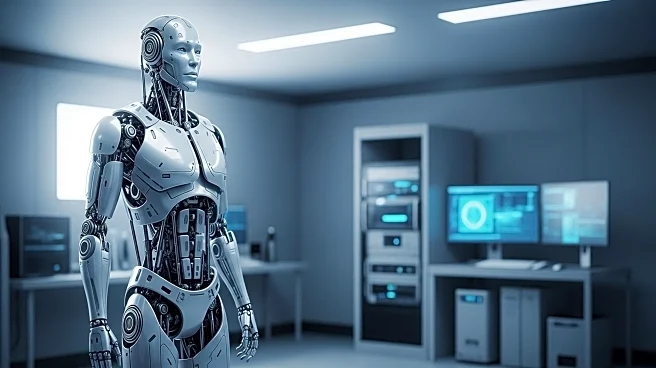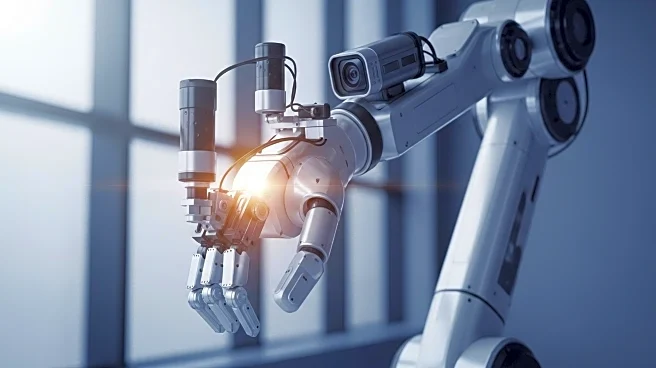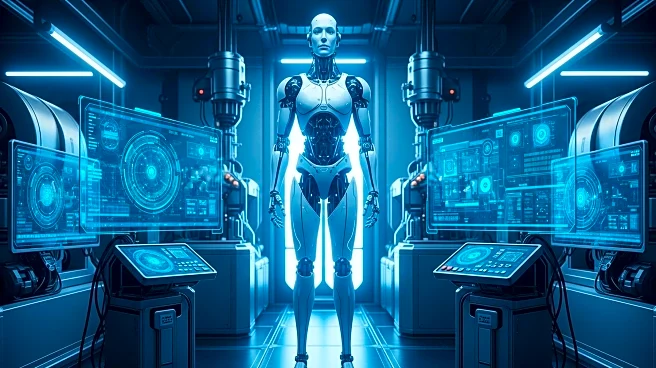What's Happening?
Logic, a leader in autonomous logistics solutions, has introduced the Octopus robot, a significant advancement in warehouse automation. The Octopus is designed to enhance picking and inspection operations by maximizing efficiency, flexibility, and intelligence in logistics hubs. This overhead industrial robot is fully customizable and can deploy multiple tooling attachments simultaneously, such as suction, clamps, and grips, without pausing for tool changes. This innovation addresses a major bottleneck in warehouse robotics, offering the fastest pick rates in the industry while reducing costs. Unlike traditional systems, the Octopus operates overhead, freeing up floor space and transforming static zones into dynamic interaction hubs. Its modular design makes it suitable for both legacy warehouses and modern micro-distribution centers, enhancing spatial efficiency and warehouse configuration.
Why It's Important?
The introduction of the Octopus robot by Logic represents a significant leap forward in warehouse automation, potentially transforming the logistics industry. By increasing pick rates and reducing operational costs, the Octopus can enhance productivity and efficiency in warehouses, which is crucial for businesses aiming to optimize supply chain operations. This innovation could lead to reduced labor costs and increased throughput, benefiting companies by improving inventory accuracy and transparency. The ability to operate in compact spaces and integrate seamlessly with existing infrastructure makes the Octopus a versatile solution for various warehouse environments, potentially setting a new standard in industrial automation.
What's Next?
As Logic's Octopus robot enters the market, it is likely to attract interest from companies seeking to modernize their warehouse operations. The potential for increased efficiency and reduced costs may drive adoption across various industries, particularly those with high-volume logistics needs. Stakeholders in the logistics and supply chain sectors may closely monitor the performance and integration of the Octopus in real-world settings. Additionally, competitors in the warehouse automation space may respond by developing similar technologies or enhancing their existing solutions to maintain market relevance.
Beyond the Headlines
The deployment of the Octopus robot could have broader implications for the workforce in the logistics industry. As automation becomes more prevalent, there may be shifts in job roles, with a potential decrease in manual labor positions and an increase in demand for skilled workers to manage and maintain automated systems. This transition could necessitate workforce retraining and adaptation to new technologies. Furthermore, the enhanced efficiency and accuracy provided by the Octopus could lead to more sustainable warehouse operations, reducing waste and energy consumption.
